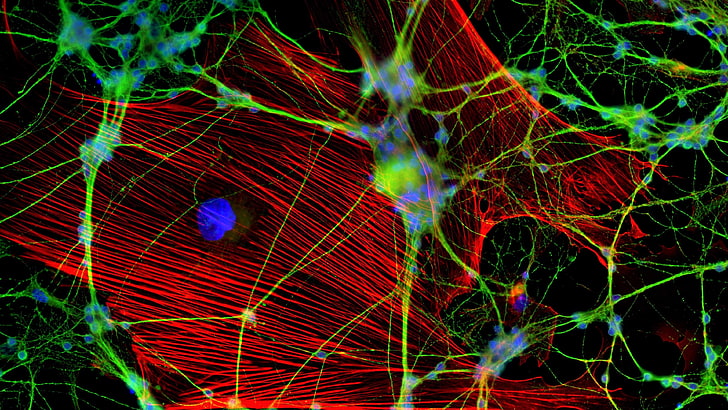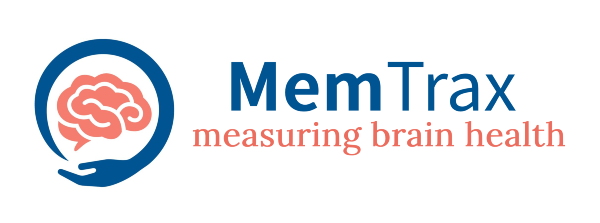Different Types of Memory
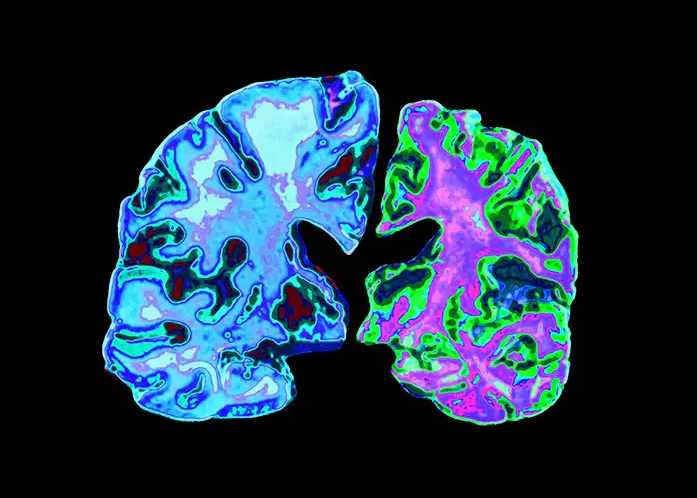
There are three main types of memory: short-term, long-term, and sensory. Each type of memory serves a different purpose, and is important for different reasons. Let us explore each type of memory in detail, and explain how they work. We will also talk about the importance of each type of memory, and provide examples to help illustrate how they are used.
What are the different types of memory?
The secret to human memory is still being studied, and there is still much we don't know. However, some things have been discovered about how memory works.
One important thing to understand about human memory is that it is not just a single entity. Memory is actually made up of different parts, each with their own unique function. These parts include the hippocampus, the cerebellum, and the cortex.
Researchers are aware of human memories and its processes but still remain clueless as to how the memory data is stored and recalled in the brain. In this article we explore different forms of understanding and strategies for hypothesizing how we might map the brain's system for memory. Most people believe the existence of a few kinds of memory while some speculate that its simply short term memory and long term memory.
Lets take a moment to explore the plethora of memory systems identified as of 2022: sensory memory, photographic memory, auditory memory, procedural memory, iconic memory, echoic memory, primary and secondary memory, episodic memory, visual spatial memory, echoic memory, conscious memory, unconscious memory, semantic memory, haptic memory, short-term memory, associative memory, temporary memory, declarative memory, recall memory, visual memory, long-term memory, eidetic memory, olfactory memory, Pavlovian classical conditioning, Konrad Lorentz imprinting, operant conditioning (slot machines B.F. Skinner), taste aversion (Garcia).
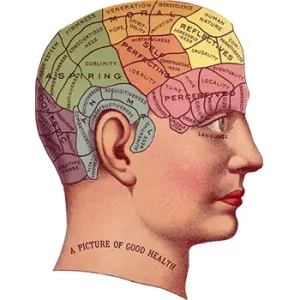
There is conflicting discoveries throughout the field of memory research on the structure and organization of these memory categories so I will list them here in a semi-structured way. The current in-fighting in research goes to show the vast complexities of the human brain, one of our most exciting undiscovered frontiers.
Stages of memory: Short-Term and Long-Term Memory
Another method of understanding memory is by understanding the memory of the time it is recalled. This approach suggests that in sensory memory information begins in short-term memory and ends in long-term memory.
Is it only a short period where the memory travels from short term storage to long term storage? Memory recall is truly fascinating when you search for the systems that control it among the firing of billions of neurons in our brain.
But not all information passes through the information processing and psychological process into the final stage, the rest has been left to fade as temporary memories. How the data is processed is determined by the way information is accessed in the shorter-duration of memory.
Primary memory, also known as short-term memory, is the memory that we use to store information for a short period of time. This information can be anything from a phone number to the details of a conversation. The vast majority of information in primary memory is lost within minutes or hours, although some information can be retained for up to a day.
Secondary memory, also known as long-term memory, is the memory that we use to store information for a long period of time. This information can be anything from the name of our first pet to the date we were born. The vast majority of information in secondary memory is retained permanently.
Tertiary memory is a proposed type of memory that is thought to be even longer lasting than secondary memory. It has been suggested that tertiary memory may be responsible for some types of knowledge such as knowledge orsemantic knowledge. However, there is currently no scientific evidence to support the of tertiary memory.
The idea of tertiary memory is fascinating, a proposed type of memory that is thought to be even longer lasting than secondary memory. However, some researchers believe that tertiary memory may be responsible for some types of knowledge, such as knowledge about semantic concepts.
Semantic knowledge refers to our understanding of the meaning and use of words, and it is thought to be stored in the brain in a separate location from episodic memories.
Types of memory: Learn more about the different types of memory
Memories can vary greatly. There are many things scientists don't even understand about human cognition. Lets investigate each type of human memory system and try to get a better understanding of how our brains function.
Short-term memory
Most information entering the brain's sensory memory is forgotten, but information we focus on, with an aim for memory, may pass into short term memory. Consider the thousands of advertisements, people, and events you are exposed to everyday, its simply too much information to retain. Short-term memory - STM or Short Memory - a memory in which small data can be retained for several seconds or less.
Short term memory does not store information permanently, and can only then be processed and the processes which are used to understand, modify, interpret and store information in memory (SM) are called working memory.
Short-term memory and working memory
Short-term and working memory are interchangeable in many ways and both refer only to storing data for short periods. However, working memory is differentiated in its nature from short-term memory in that working memory mainly requires temporarily storing information which has been mentally modified.
In short-term memories a name or identifying statistic is used to process a certain number of information or other information consciously and to retain it. The file is then stored as long-term memory or can simply be erased.
Episodic memory
A person's memories of an incident ("episode" a person has experienced) during their lives are episodic memories. It brings attention to details from how you ate to the emotions you feel while talking about an intimate relationship.
The memories that come from episodic memories may be very recently, decades. Another similar concept is autobiographical memory, which is memory of information contained in people's life histories.
Short-term memory has 3 key aspects:
- The ability to store data for short periods of time.
- The ability to process information that is accessed in short-duration memory.
- The ability to mentally modify information before storing it in working memory.
Some researchers argue that there are two types of short-term memory: a. The first type is called primary or active short-term memory, which refers to the data we are consciously attending to and processing at any given moment.
This type of short-term memory has a limited capacity (usually around seven items) and a brief duration (a few seconds). b. The second type is called secondary or passive short-term memory, which refers to the data that we are not consciously attending to but that can still be retrieved from our memory store. This type of short-term memory has a larger capacity than primary short-term memory but a shorter duration (several seconds to a minute).
Priming is the implicit memory effect in which exposure to a stimulus influences response to a later stimulus. In other words, priming is a way of activating certain memories without consciously trying to do so.
There are two types of priming:
a. sensory priming, which occurs when the presentation of one stimulus affects the processing of another stimulus that is presented soon afterwards in the same modality (e.g., seeing a word on a screen affects the speed with which that word can be read aloud).
b. semantic priming, which occurs when the presentation of one stimulus affects the processing of another stimulus that is presented soon afterwards in a different modality (e.g., hearing a word affects the speed with which that word can be recognized visually).
Photographic Memory

There is a type of memory known as photographic memory, or eidetic memory, which is the ability to remember images with great clarity. This type of memory is rare, occurring in only about 2-3% of the population.
Scientists have long been fascinated by photographic memory and have studied it extensively in hopes of understanding how it works and how to replicate it. There are still many questions about photographic memory that remain unanswered, but researchers are making progress in understanding this unique ability.
Researchers who study photographic memory have found that it is a skill that can be learned and improved. However, not everyone who has a photographic memory is able to use it effectively. Some people have a hard time remembering what they see, while others are able to remember images with great clarity.
Researchers are still trying to understand the complexities of photographic memory and how it works. They are exploring different ways to improve this skill and are hopeful that someday they will be able to unlock all its secrets.
Echoic Memory
Echoic memory is a short-term memory buffer that temporarily stores auditory information. This type of memory is very useful for remembering phone numbers, for example, because the number can be repeated aloud to store it in echoic memory. The information stored in echoic memory is usually remembered for a few seconds, but sometimes up to a minute.
Echoic memory was first studied by American psychologist Ulric Neisser, who published his findings in a seminal paper on the subject in 1967. Since then, much research has been conducted on echoic memory and its role in human cognition.
Echoic memory is believed to be stored in the auditory cortex, which is located in the temporal lobe of the brain. This area of the brain is responsible for processing auditory information.
There are two types of echoic memory:
a. immediate memory, which lasts for a few seconds and allows us to retain information long enough to process it
b. delayed memory, which can last for up to a minute and allows us to remember information even after the original stimulus has ended.
Echoic memory is important for many everyday tasks, such as listening to a conversation and remembering what was said. It also plays a role in language acquisition and helps us to process the sounds of speech.
There is still much that we don’t know about echoic memory, but research on this topic is ongoing and has the potential to provide insights into how human cognition works.
Conscious Memory
Conscious memory is the ability to remember information that you are aware of at a specific point in time. This type of memory is different from short-term memory, which refers to the data that you are currently processing, and long-term memory, which refers to information that you have stored over a long period of time.
Conscious memory is a type of working memory, which is the cognitive process that allows us to temporarily store and manipulate information in our mind. Working memory is important for everyday tasks such as decision-making, problem-solving, and reasoning.
There are two types of conscious memory: explicit (or declarative) and implicit (or procedural).
Explicit memory is the type of conscious memory that we use to remember facts and events. This type of memory is stored in our long-term memory and can be retrieved at will. Implicit memory, on the other hand, is the type of conscious memory that we use for skills and habits. This type of memory is stored in our short-term memory and is retrieved automatically.
The distinction between explicit and implicit memory is important because it helps us understand how we remember things. For example, when you ride a bike, you are using your implicit memory. You do not have to think about how to pedal or steer because those skills are stored in your implicit
Implicit Memory
The implicit memory describes knowledge that is unconsciously available but can never be readily understood. Nevertheless, implicit memories are extremely important to us since they directly affect our behavior. Implicated memory is a measure that determines how a person's experiences influence their behavior if they are unconsciously aware of them.
The implicit memory is a type which is generally classified into three classes: the procedurally defined memory, classical conditioning effect and priming.
Haptic Memory
Haptic memory is the ability to remember information that has been experienced through touch. This type of memory is important for tasks such as dressing ourselves, cooking, and driving a car.Haptic memory is stored in the somatosensory cortex, which is located in the parietal lobe of the brain. This area of the brain is responsible for processing information from the skin and other sensory organs.
There are two types of haptic memory:
a. short-term haptic memory, which lasts for a few seconds and allows us to remember information that we have touched recently
b. long-term haptic memory, which allows us to remember information that we have touched in the past.Haptic memory is important for everyday tasks because it helps us to interact with our environment. It also plays a role in our sense of touch, which is the sense that allows us to feel things with our skin.
Procedural Memory
Procedural memory is the unavoidable knowledge of how things work. Sitting down on a bicycle after no longer attempting it is just an example of procedure memory.
This term describes an enduring knowledge and practice in how to learn a new skill—from basic skills to ones that take time and effort to learn and improve. Similar terms include kinesthetic memory that relate specifically to memory affecting physical behavior.
Kinesthetic memory is a type of procedural memory that stores information about the movements of our bodies. This includes information about the movements of our muscles and the way we feel when we move our bodies.
Kinesthetic memories are usually accessed without any conscious effort and are often retrieved automatically (for example, when we ride a bike, we automatically remember the way it feels to pedal and balance on the bike).
Pavlovian classical conditioning is a type of implicit memory that occurs when we learn to associate two stimuli (a cue and a reward) so that the cue automatically predicts the reward. For example, if you repeatedly give a dog food after he hears a bell ringing, the bell will eventually start to predict the food and the dog will start to salivate at the sound of the bell.
Priming is a type of implicit memory that occurs when exposure to one stimulus (a word, a picture, etc.) makes it more likely that we will remember another related stimulus.
For example, if you are shown the word “red”, you are more likely to remember the word “apple” than the word “table”. This is because the word “red” primes the word “apple”, which is a related word.
Explicit Memory
Explicit memory, also known as declarative memory, is the type of long-term memory that stores information that can be consciously recalled. This includes memories of facts and events, as well as memories of personal experiences.
Explicit memories are usually accessed with conscious effort and are often retrieved through verbal or written cues (for example, when we take a test, we have to consciously remember the information that we want to recall).
When assessing memories by having someone remember something consciously, we measure explicit memories. Expressive memory refers to information or experiences that are easily remembered.
This is generally how well a person can remember certain tasks or events. Recognition memory is the ability to remember something that was experienced before. This could be anything from recognizing a face to remembering a melody.
Unconscious Memory
There are three main unconscious memory systems: the procedural memory, the classical conditioning effect and priming.The procedural memory system is the knowledge of how to do things unconsciously.
This includes skills such as riding a bike or swimming, as well as more complex skills that take time and effort to learn, such as playing a musical instrument.The classical conditioning effect is a type of implicit memory that occurs when we learn to associate two stimuli (a cue and a reward) so that the cue automatically predicts the reward.
For example, if you repeatedly give a dog food after he hears a bell ringing, the bell will eventually start to predict the food and the dog will start to salivate at the sound of the bell.
Priming is a type of implicit memory that occurs when exposure to one stimulus (a word, a picture, etc.) makes it more likely that we will remember another related stimulus.
For example, if you are shown the word “red”, you are more likely to remember the word “apple” than the word “table”. This is because the word “red” primes the word “apple”, which is a related word.
Sub Conscious Memory
The sub conscious memory system is the knowledge of things that we know, but don’t consciously remember. This includes memories of events that happened before we were born (like music in the womb), as well as memories that we have forgotten or repressed. The sub conscious memory system is usually accessed through feelings and intuition rather than through conscious thought.
Recall Memory
Recall memory, on the other hand, is the ability to remember information without any external cues. This is often considered the “purest” form of memory since it requires you to retrieve information from your memory without any help.
Olfactory Memory
Olfactory memory refers to the recollection of odors. This type of memory is usually very strong, and people can often remember smells from their childhood or from a past relationship. Olfactory memories can sometimes be difficult to forget, and they can often evoke strong emotions.
Tactile Memory
Tactile memory is the ability to remember the sensations of touch. This includes the textures of objects, the temperature of a room, and the feeling of someone’s skin. Tactile memories are often stored in our long-term memory, and they can be difficult to forget.
Visual Memory
Visual memory is the ability to remember what we see. This includes the ability to remember faces, objects, and scenes. Visual memory is often very strong, and people can often remember images from their childhood or from a past relationship. Visual memories can sometimes be difficult to forget, and they can often evoke strong emotions.
Auditory Memory
Auditory memory is the ability to remember what we hear. This includes the ability to remember the sound of someone’s voice, the sound of a place, and the sound of music. Auditory memory is often very strong, and people can often remember sounds from their childhood or from a past relationship. Auditory memories can sometimes be difficult to forget, and they can often evoke strong emotions.
Long-term Memory
Long-term memory is specialized brain systems used by people to retain knowledge. Several functions are different. Since sensory memories only flicker in seconds, and brief memories can just be one minute, long lasting memories may be from the same event that lasted 5 minutes or something that took place more than 20 years ago.
Long term memory is incredibly varied. Often it is conscious and requires our brain to constantly be thinking about something in order to recall something. Sometimes they are unconscious and simply appear in a state without any conscious recall.
Long-term memory - LTM or Long Memory - a memory in which large amounts of data can be stored permanently. When we talk about long-term memories, we are usually referring to episodic and semantic memories (see below). However, there is evidence to suggest that there may be different types of long-term memory, each with its own unique characteristics.
There is still much to be learned about long-term memory. Some researchers are studying different types of long-term memory (e.g., episodic, semantic, procedural, etc.), and how they are related to each other. Others are investigating ways to improve long-term memory (e.g., by using mnemonic devices, increasing cognitive stimulation, etc.).
Declarative memory vs. Non Declarative Memory
Declarative memory is a type of long-term memory that involves facts and knowledge. This type of memory can be consciously recalled, and it is usually used to remember information that is important to us. Declarative memories can be either semantic (related to knowledge) or episodic (related to personal experiences).
Non-declarative memory, on the other hand, is a type of long-term memory that does not involve facts or knowledge. This type of memory is usually unconscious, and it is used to remember information that is important to us. Non-declarative memories can be either procedural (relating to skills) or emotional (relating to feelings).
Semantic Memory
Semantic memory is the long-lasting knowledge stored by people. Some of the information in semantic memory is related to another type of information in a person’s memory. Besides recalling the sounds and emotions felt by oneself, one can remember facts of the celebration. Semantics can contain information about people or places with which we do not have a direct connection or relationship.
Semantic memory is a type of long-term memory that stores information about the world around us. This includes factual information such as the capital of France or the name of the first president of the United States. Semantic memories are usually accessed without any conscious effort and are often retrieved automatically (for example, when we see a picture of a dog, we automatically think “dog”).
Operant conditioning (also known as instrumental conditioning) is a type of memory associated with learning that occurs as a consequence of the consequences of a behavior. There are four basic principles of operant conditioning:
Reinforcement
Reinforcement is a type of learning that occurs as a result of the consequences of a behavior. There are four basic principles of operant conditioning:
- positive reinforcement,
- negative reinforcement,
- punishment, and
- extinction.
Positive reinforcement occurs when a behavior is reinforced (increased) by the presentation of a positive stimulus. For example, if you give someone a treat every time they do something you want them to do, then you are using positive reinforcement.
Negative reinforcement occurs when a behavior is reinforced (increased) by the removal of a negative stimulus. For example, if you stop smoking cigarettes because you don’t want to die, then you are using negative reinforcement.
Punishment
Punishment occurs when a behavior is punished (decreased) by the presentation of a negative stimulus. For example, if you spank your child every time they misbehave, then you are using punishment.
Extinction
Extinction occurs when a behavior is no longer reinforced (or punished). For example, if you stop giving your child treats every time they do something you want them to do, then you are using extinction.
Spontaneous recovery
Spontaneous recovery is the reappearance of a previously extinguished behavior after a period of time in which the behavior was not reinforced. For example, if you stop giving your child treats every time they do something you want them to do, then you are using extinction. However, if your child starts behaving well again after a few days without treats, then this is an example of spontaneous recovery.
Non-associative Memory: Habituation and Sensitization
Non-associative memory is a type of memory that does not involve any association between items or events. There are two types of non-associative memory: habituation and sensitization.Habituation is a type of non-associative memory that occurs when we become used to a particular stimulus.
For example, if we hear the sound of a bell ringing over and over again, we will eventually stop hearing the sound. This is because our brain has habituated to the sound of the bell and stopped responding to it.Sensitization is a type of non-associative memory that occurs when we become more sensitive to a particular stimulus.
Another example, if we are repeatedly exposed to the smell of ammonia, we will eventually start feeling sick when we smell it. This is because our brain has sensitized to the smell of ammonia and begun to respond to it with negative emotions.
Imprinting as a Type of Associative Memory
This involves the process of learning and remembering the features of an object or organism. It is most commonly seen in animals, where a newborn animal will quickly learn to recognize and identify its parents.
Konrad Lorenz was a German biologist who studied imprinting in animals in the 1930s. He found that if a baby bird or other young animal was removed from its parents before it had a chance to learn who they were, it would later imprint on any objects that moved.
For example, if you removed a gossling from its mother and then placed it in a pen with other ducks, the duck would later imprint on the other ducks and follow them around.
Imprinting occurs when after an animal is born and they form an attachment to the first thing it sees. Lorenz found that new hatched baby ducks would follow the first moving thing they saw — often Lorenz himself.
Memory and Brain Research
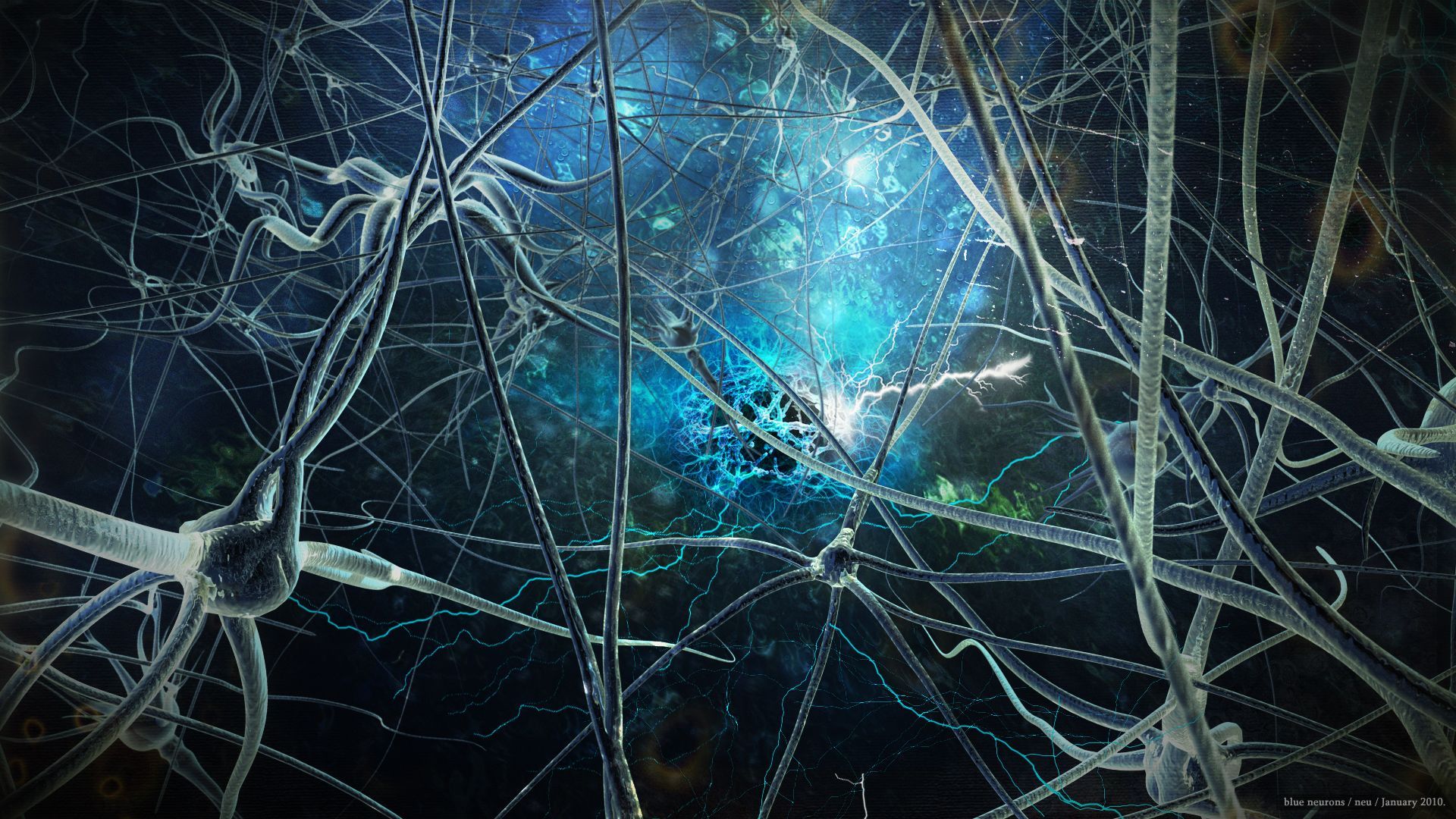
Despite recent developments, there are still important problems to solve. Many of those issues involve molecular processes of Memory recovery and decomposing. Take example processes that influence the synaptic strength of neurons in the LTPs of hippocampus. In their report, Hardt et. (2013) noted that although molecular processes involved establishing LTPC were clearly described, decay of early and late TPA remains unstudied.
In the article, it is mentioned that there are still important problems to solve in the area of Memory. One such problem is the decay of early and late TPA. This refers to the Transient Presynaptic Acetylcholine release, which is a measure of how well a synapse transmits signals. The article suggests that more research needs to be done in this area in order to improve our understanding of Memory so use our memory test.
Another example is the role of microglia in memory recall. Microglia are cells that protect the brain from infection and disease. They are also involved in the process of inflammation, which is necessary for healing. However, recent research has shown that microglia may also play a role in memory recall. In a study by Takahashi et al. (2013), it was found that microglia are necessary for the successful recall of memories in mice. This suggests that microglia may be necessary for memory recall in humans as well.
These are just two examples of the many problems that still need to be solved in the field of Memory. With more research, we will be able to better understand how Memory works and how to improve it.
One important question that researchers are still trying to answer is how long-term memories are formed and stored. It is believed that there are two main types of long-term memory: explicit and implicit. Explicit memory, also known as declarative memory, is the type of long-term memory that stores information that can be consciously recalled. This includes memories of facts and events, as well as personal memories. Implicit memory, on the other hand, is the type of long-term memory that stores information that is not consciously recalled. This includes things like skills and habits.
Researchers are still trying to understand how explicit and implicit memories are formed and stored. One theory is that explicit memories are stored in the hippocampus, while implicit memories are stored in the cerebellum. However, this theory is not yet proven. Another theory is that explicit and implicit memories are formed in different ways. For example, explicit memories may be formed through a process of consolidation, while implicit memories may be formed through a process of rehearsal.
Despite recent advances, there is still much to learn about how long-term memories are formed and stored. With more research, we will be able to better understand this process and improve our ability to form and store memories.
As can be seen, there are many different types of memory, each with their own unique set of features. Understanding the different types of memory is essential for understanding how we remember things and how we can improve our memory.
The secret to human memory is still being studied, and there is still much we don't know. However, some things have been discovered about how memory works.
One important thing to understand about human memory is that it is not just a single entity. Memory is actually made up of different parts, each with their own unique function. These parts include the hippocampus, the cerebellum, and the cortex.
The Hippocampus
The hippocampal system is responsible for the formation of new memories. It is also involved in the consolidation of long-term memories.
- The hippocampus is responsible for the formation of new memories
- It is also involved in the consolidation of long-term memories
- The hippocampus is located in the medial temporal lobe
- It is important for learning and memory
- Damage to the hippocampus can cause memory problems
The Cerebellum
The cerebellum is responsible for the storage of long-term memories. Our cerebellum is located in the posterior lobe of the brain. The cerebellum is responsible for the storage of long-term memories It is located in the posterior lobe of the brain. The cerebellum is important for motor learning and balance, damage to the cerebellum can cause memory problems and movement disorders
The Cortex
The cortex is responsible for the retrieval of memories. This is the part of the brain that is used when we try to remember something. The cortex is also responsible for our senses, including sight, smell, and touch. The cortex is responsible for higher cognitive functions, such as attention, language, and perception. The cortex is also involved in the retrieval of memories.
The cortex makes up the majority of the brain's mass It is important for consciousness and thought processes.
The brain is responsible for all of our thoughts, feelings, and actions. It is also responsible for our memory. The brain is a complex organ, and we are still learning about its functions. However, we do know that the brain is essential for human life.
One interesting thing about human memory is that it is not perfect. In fact, human memory is often quite unreliable. This is because our memories are often influenced by our emotions and beliefs. For example, people who witness a crime often remember the event differently than people who did not witness the crime. This is because their memories are influenced by their emotional state at the time of the event.
Despite its imperfections, human memory is an amazing ability that allows us to store and recall vast amounts of information.
Elon Musk's proposed brain-computer interface would likely require more research into how different types of memory systems function biologically. This research would help us to better understand how memories are formed and stored, which would be essential for developing a successful brain-computer interface.
Long Term Memory Research
Some researchers who are investigating long-term memory are Dr. James McGaugh, Dr. Endel Tulving, and Dr. Brenda Milner.
Dr. James McGaugh is a neuroscientist who has conducted extensive research on long-term memory. He has found that there are different types of long-term memory, each with its own unique characteristics. He has also discovered that long-term memory can be improved by using mnemonic devices and increasing cognitive stimulation.
Endel Tulving is a cognitive test psychologist who has conducted extensive research on episodic memory (see below). He has found that episodic memory is composed of two components: the recollection component and the awareness component.
The recollection component refers to the ability to remember the details of an event, and the awareness component refers to the ability to remember that you are remembering an event.
He has also discovered that episodic memory can be impaired by damage to the hippocampus (a structure in the brain that is involved in memory formation).
Dr. Brenda Milner is a neuropsychologist who has conducted research on episodic memory and amnesia (loss of memory). She has found that people with amnesia can still remember information that is stored in semantic memory (see below), but they cannot remember information that is stored in episodic memory.
Sign Up for MemTrax - Support Our Mission
Peer reviewed studies References:
-Hardt, O., Wang, Y., & Sheng, M. (2013). Molecular mechanisms of memory formation. Nature Reviews Neuroscience, 14(11), 610-623.
-Takahashi, R., Katagiri, Y., Yokoyama, T., & Miyamoto, A. (2013). Microglia are necessary for successful retrieval of fear memory. Nature Communications, DOI:
Ashford, J. (2014). Theories of memory formation and storage. Retrieved from https://www.ashford.edu/faculty/jashford/theories-of-memory-formation-and-storage
-Ashford, J. W. (2013). Theories of Memory. Retrieved from https://www.boundless.com/psychology/textbooks/boundless-psychology-textbook/memory-7/theories-of-memory-31/
-Baddeley, A. (2012). Your Memory: A User's Guide. London: Robinson.
-Ebbinghaus, H. (2013). Memory: A Contribution to Experimental Psychology. New York: Dover Publications.
-Squire, L.R., Wixted, J.T. (2007). The neuroscience of human memory since HM. Annual Review of Neuroscience, 30, 259-288. DOI:
-Ebbinghaus, H. (1885). Memory: A Contribution to Experimental Psychology. New York: Dover Publications.
Ashford, J. (2011). The role of the medial temporal lobe in explicit memory. Nature Reviews Neuroscience, 12(8), 512-524.
In this article, Ashford discusses the role of the medial temporal lobe in explicit memory. He argues that the medial temporal lobe is necessary for the formation of explicit memories. He also discusses the importance of the hippocampus in memory formation.
-Hardt, O., Nader, K. A., & Wolf, M. (2013). Memory consolidation and reconsolidation: a synaptic perspective. Trends in neurosciences, 36(12), 610-618. doi:S0166-2236(13)00225-0 [pii]
As can be seen, there are many different types of memory, each with their own unique set of features. Understanding the different types of memory is essential for understanding how we remember things and how we can improve our memory.
